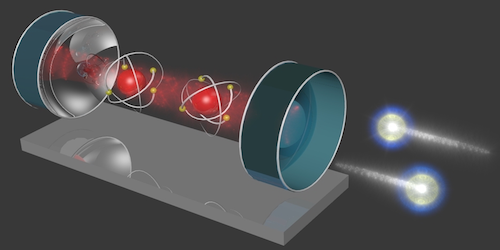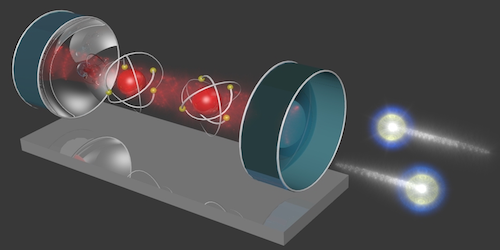Entangling Atoms by Sculpting their Wave Functions
Neutral atoms are easier to confine in optical cavities than ions but trickier to entangle because atoms are harder to control with external fields. Now, researchers have demonstrated a scheme for entangling such atoms that involves carving away parts of the atoms’ wave functions with photons. While the team demonstrated this technique for neutral atoms, they say it should also work for ions.
Stephan Welte and colleagues from the Max Planck Institute of Quantum Optics in Germany realized a scheme that was first theoretically proposed in 2003. Two unentangled identical atoms are trapped in an optical cavity. Laser pulses are shined onto the atoms, independently exciting them into the same state, which is a superposition of each atom’s ground state and one of its spin excited states. Next, a second, weaker light pulse is shined into the cavity. This light field reflects around the cavity and interacts with the atoms. The field simultaneously links the atoms to the cavity, and thus to each other, and carries out the carving.
The state of the atoms can be measured by looking at the polarization changes of the weak light field after reflection from the cavity. If the atoms are in an unwanted configuration (both in their ground states or both in their excited states), the same light pulses carve away the corresponding part of the wave function. This process is performed twice to remove the two unentangled parts of the wave function, leaving the atoms in an entangled state. The team demonstrated that the protocol can produce any one of four distinct maximally entangled superpositions for a pair of two-level atoms.
This research is published in Physical Review Letters.
–Katherine Wright
Katherine Wright is a Contributing Editor for Physics.





